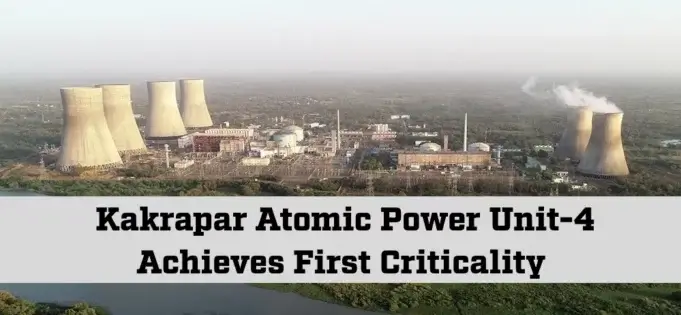On 17 December 2023, a milestone was reached at Unit 4 of the Kakrapar Atomic Power Project (KAPP 4–700 MW) in India, as it achieved criticality, marking the commencement of a controlled fission chain reaction. This achievement came after meticulous adherence to safety guidelines set by the Atomic Energy Regulatory Board (AERB), which thoroughly scrutinized the safety measures of the plant systems. KAPP-4 represents the second unit in a series of sixteen indigenous Pressurized Heavy Water Reactors (PHWR) with a capacity of 700 MW each, currently being established in the country.
Following the attainment of criticality, a series of experiments and tests will be carried out within KAPP-4. The power level will be gradually increased, following the approvals and clearances provided by the Atomic Energy Regulatory Board (AERB). Ultimately, this process will lead to the unit’s operation at its maximum power capacity.
KAPP 3&4, comprising two units with a total capacity of 2X700 MW, are situated in Kakrapar, Surat district, Gujarat. These indigenous PHWRs are equipped with advanced safety features, positioning them among the safest reactors globally. Notably, while NPCIL (Nuclear Power Corporation of India Limited) has overseen the design, construction, commissioning, and operation of these reactors, Indian companies have played a pivotal role in supplying equipment and executing contracts.
Shri B.C. Pathak, CMD of NPCIL, who was present at the station’s control room alongside the site team, emphasized the significance of achieving criticality for KAPP-4, especially within six months of Unit-3’s commercial operation. This accomplishment underscores NPCIL’s excellence across all aspects of nuclear power, encompassing design, construction, commissioning, and operation.
NPCIL presently operates 23 reactors with a collective capacity of 7,480 MW and has nine units, including KAPP-4, under construction, with a combined capacity of 7,500 MW. Additionally, there are ten more reactors in pre-project activities, boasting a total capacity of 7,000 MW, and these are expected to be completed by 2031-32.











